‘Organic’ is the word that comes to mind whenever I think about Sikkim, a state nestled in the foothills of the Eastern Himalayas. The surreal landscapes and mountains with their rich flora, resonates with its ‘organic’ image. In 2016, Sikkim garnered global attention as the first state in the world to implement a 100 percent organic policy. Berger (2008) writes, “The way we see things is affected by what we know or what we believe. Seeing comes before words.” Every time I visit a new place, I want to uncover the various ways one can understand the region. This attempt to break through the ‘structured understanding’ of organic Sikkim and its green economy led me towards Namchi’s Kisan Bazar, a modern infrastructure where local farmers and shopkeepers sell produce (fruits and vegetables) grown in the nearby villages.
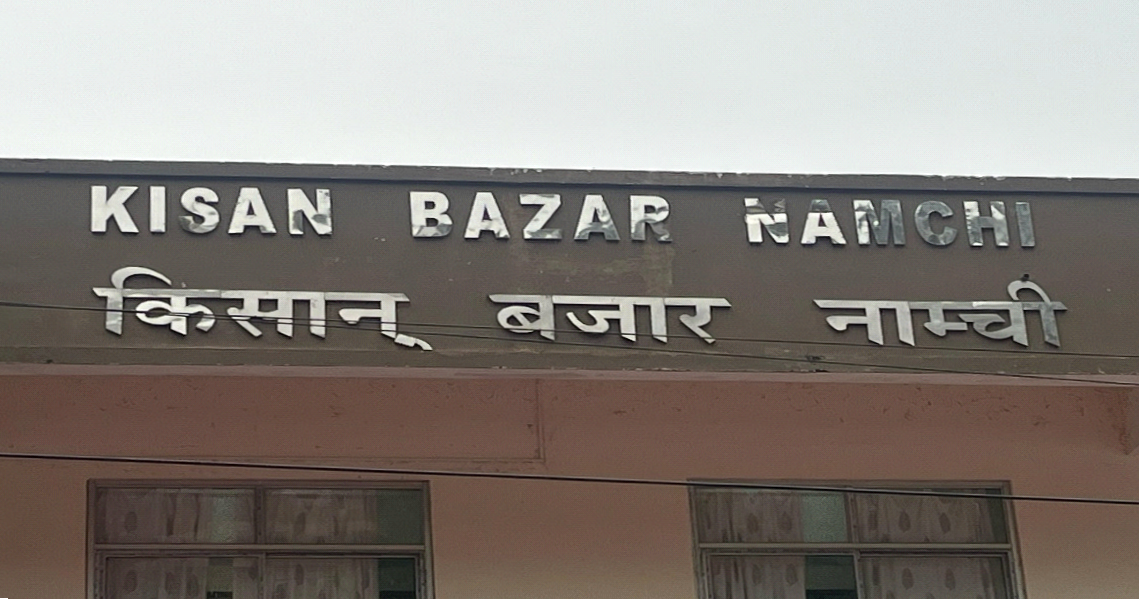
Sikkim carries a duality, an intersection of the urban and the rural. For instance, Kisan Bazar is an economic hub but it is also a perfect example of the interconnection between rural and urban Sikkim.
Namchi’s Kisan Bazar has been successful in preserving the ‘organic’ image, I could not help but marvel at the wide variety of fruits and vegetables that were displayed. On one of my visits, I met Arjun Chhetri from Timitar, who runs a small shop selling Rayo ko Saag (Mustard Greens). He passionately talked about his produce, sharing that Rayo ko Saag is seasonal so he gets to sell it only once a year. I also noticed makeshift stalls across Namchi selling local fruits and vegetables. These people deeply understand the land. They have led a silent revolution, seeking to preserve the ‘organic’ against the fast-changing landscape littered with urban houses and colonized by big corporations through shopping complexes, food joints, departmental stores, etc. Sikkim carries a duality, an intersection of the urban and the rural. For instance, Kisan Bazar is an economic hub but it is also a perfect example of the interconnection between rural and urban Sikkim.
Farmers Markets versus Grocery Stores
Food at the Namchi farmers market presents a different worldview- cucumbers lie unpolished with patches of mud, scarred guavas display their stories, and oranges of all sizes are exhibited. A far cry from the unrealistic perfection maintained in grocery stores. Where every corner is covered by advertisements, with the food packaged/bottled/frozen/canned, making customers believe that packaged food is incomparable to the local produce. Kimmerer (2015) writes, “Something is broken when the food comes on a styrofoam tray wrapped in slippery plastic, a carcass of being whose only chance at life was a cramped cage. This is not a gift of life; it is a theft.” Departmental stores exhibit food in stacks and rows from where the consumers pick and select from an array of brands skilled in wordplay and display.
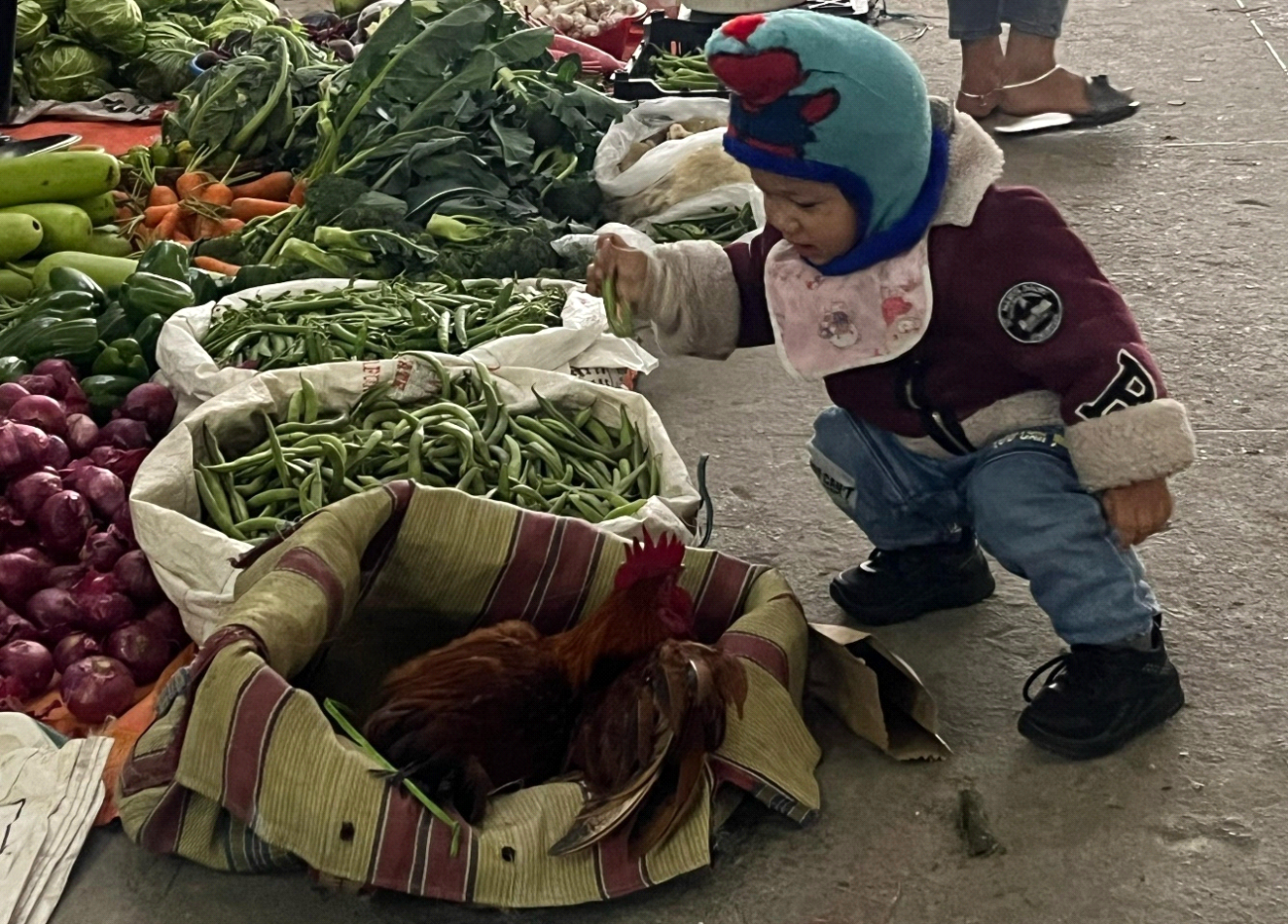
Are we at a loss when we voluntarily participate in embracing the global palate while ignoring our own? Can the urban food industry connect us to the land where unearthed stories of our ancestors, cultures, and roots lie? Can a bottle of jam inform its consumers about the labour of the farmers in harvesting the strawberries? Can the mushroom packets reveal the toil of picking them? Are the departmental stores capable of telling the buyers about food, the land, or nature?
“Nowadays kids don't eat their meals. They prefer Wai Wai, Mimi, and Chips. The shops do not hesitate to display such items and kids get easily lured when they see them”, shared Kamala Magar of Assangthang, who has been selling vegetables in Kisan Bazar for the last twenty years. She added, “It was not like this during our childhood, only round-circular sweets were sold.” My food habits aren’t stellar either, a snack store in Namchi displaying a variety of exported global food constantly beckons me. From Korean Ramen to American Tabasco sauce, Japanese seaweed to Thai Prawn wafers, the store is a dream for food lovers. As I shuffle through the rows, various questions about our food choices arise. Are we at a loss when we voluntarily participate in embracing the global palate while ignoring our own? Can the urban food industry connect us to the land where unearthed stories of our ancestors, cultures, and roots lie? Can a bottle of jam inform its consumers about the labour of the farmers in harvesting the strawberries? Can the mushroom packets reveal the toil of picking them? Are the departmental stores capable of telling the buyers about food, the land, or nature?
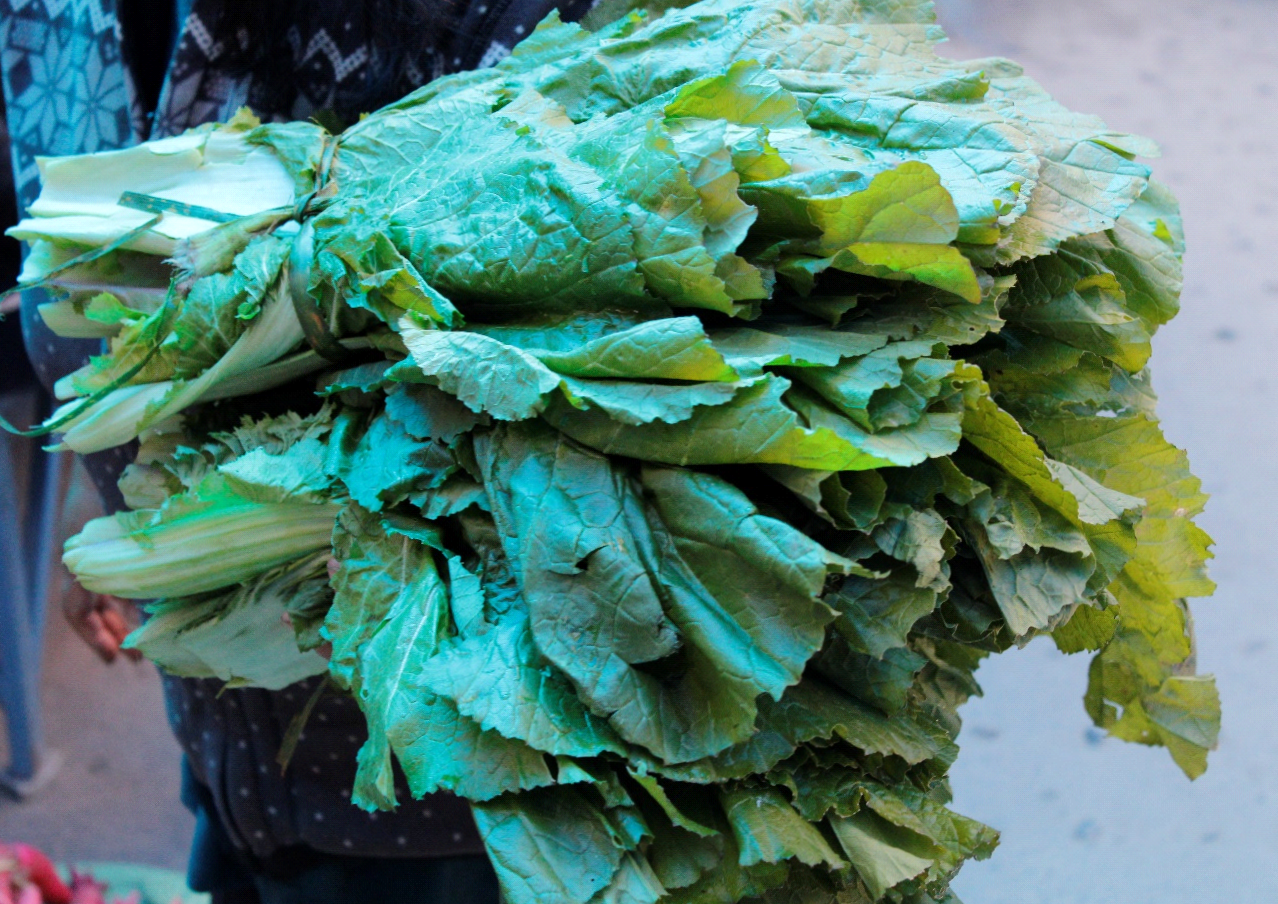
Photo: Anshu Chhetri
The grocery stores do offer seasonal fruits and vegetables, however, there is a mish-mash of seasons... While the farmers’ markets are in sync with the rhythm of the seasons, bursting with colours and flavours.
Obama (2021) talks about how their family chef ignited a conscience within her to be against grocery stores. “He shifted our family away from the fluorescent sameness of the grocery store and towards the rhythm of seasons. He could be reverent about the arrival of fresh peas in springtime or the moment raspberries became ripe in June. He waited until peaches were rich and plump before serving them to the girls, knowing that they might comprise with candy. Sam also had an educated perspective on food and health issues, namely how the food industry marketed processed foods to families in the name of convenience and how that was having severe health consequences.” The grocery stores do offer seasonal fruits and vegetables, however, there is a mish-mash of seasons. Mangoes arrive before their time, packaged strawberries lack their natural tanginess, and guavas are sold around the year, often these fruits disappoint the buyers with their dull flavours. While the farmers’ markets are in sync with the rhythm of the seasons, bursting with colours and flavours.
Namchi’s Kisan Bazar
The Kisan Bazar is a conglomeration of the local farmer communities, who come together to present a testimony of our Earth’s generosity. Tashi Sherpa from Barbing, showed his kiwi and lemon saplings and proudly shared that he has been selling vegetables for the last fifty years. “I am the first person who started selling cabbage, cauliflower, carrot, coriander, and radish here. Back then, we used to spread our shops near the plaza.” Every winter the change of seasons is witnessed when the Simal Tarul (cassava or tapioca) appears, you can find it in the markets stained with patches of mud in dokos (cane baskets). Kimmerer (2015) writes that ceremonies are the way we “remember to remember”. Every January, in the peak of winter, Nepali people residing in the Indian subcontinent and Nepal celebrate Maghe Sankranti, eating various assorted traditional delicacies along with sweet potatoes and different varieties of yam. It is a harvest festival, which falls on Magh the tenth month in Bikram Sambat (Nepal’s official Hindu religious calendar). This is a tradition maintained by our ancestors, a day for families and neighbours’ to come together and feast. Perhaps, our ancestors sought to remind us that gratitude towards the land is essential.
Every winter the change of seasons is witnessed when the Simal Tarul (cassava or tapioca) appears, you can find it in the markets stained with patches of mud in dokos (cane baskets)...Every January, in the peak of winter, Nepali people residing in the Indian subcontinent and Nepal celebrate Maghe Sankranti, eating various assorted traditional delicacies along with sweet potatoes and different varieties of yam...Perhaps, our ancestors sought to remind us that gratitude towards the land is essential.
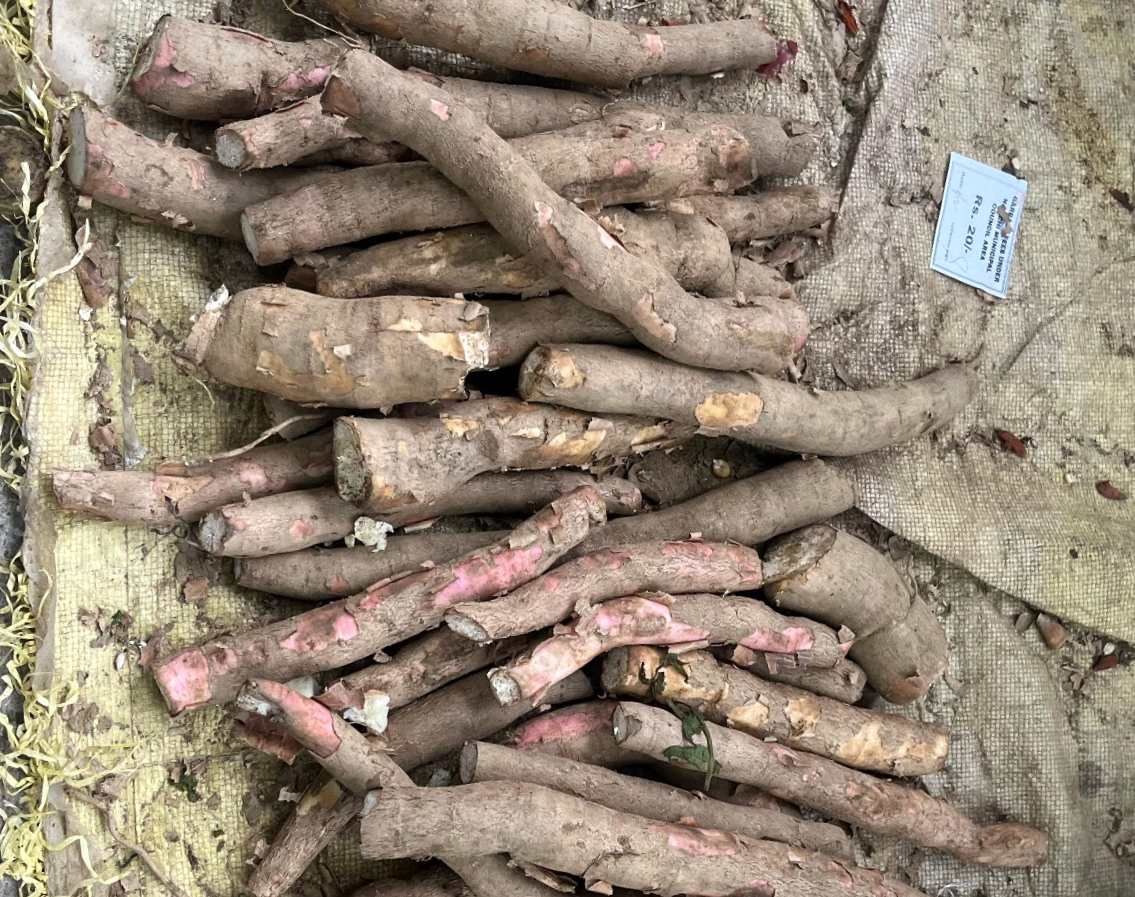
“The earth is so richly endowed that the least we can do in return is to pay attention.” (Kimmerer, 2015) This feels true every time I visit an open farmer’s market. Every Sunday, when I visit the Namchi Kisan Bazar, it reminds me of the travel food shows that I watched as a curious teenager. It is interesting to watch the camaraderie of people, irrespective of caste, class, and colour. The fresh produce greets you at the entrance, inviting you to understand nature and its bounty. A community of farmers comprising both men and women engages with the buyers from dusk till dawn, while passing down their wisdom to active listeners. These days, a slight change can be noticed due to the popularity of cell phones. On my last visit, I saw some sellers leaving their shops unattended as they were hooked to their phone screens. Sometimes, the ‘progress’ of the modern world seems untrue, especially with the way phones have been successfully eroding human-to-human connection.
Every Sunday, when I visit the Namchi Kisan Bazar...It is interesting to watch the camaraderie of people, irrespective of caste, class, and colour. The fresh produce greets you at the entrance, inviting you to understand nature and its bounty. A community of farmers comprising both men and women engages with the buyers from dusk till dawn, while passing down their wisdom to active listeners.
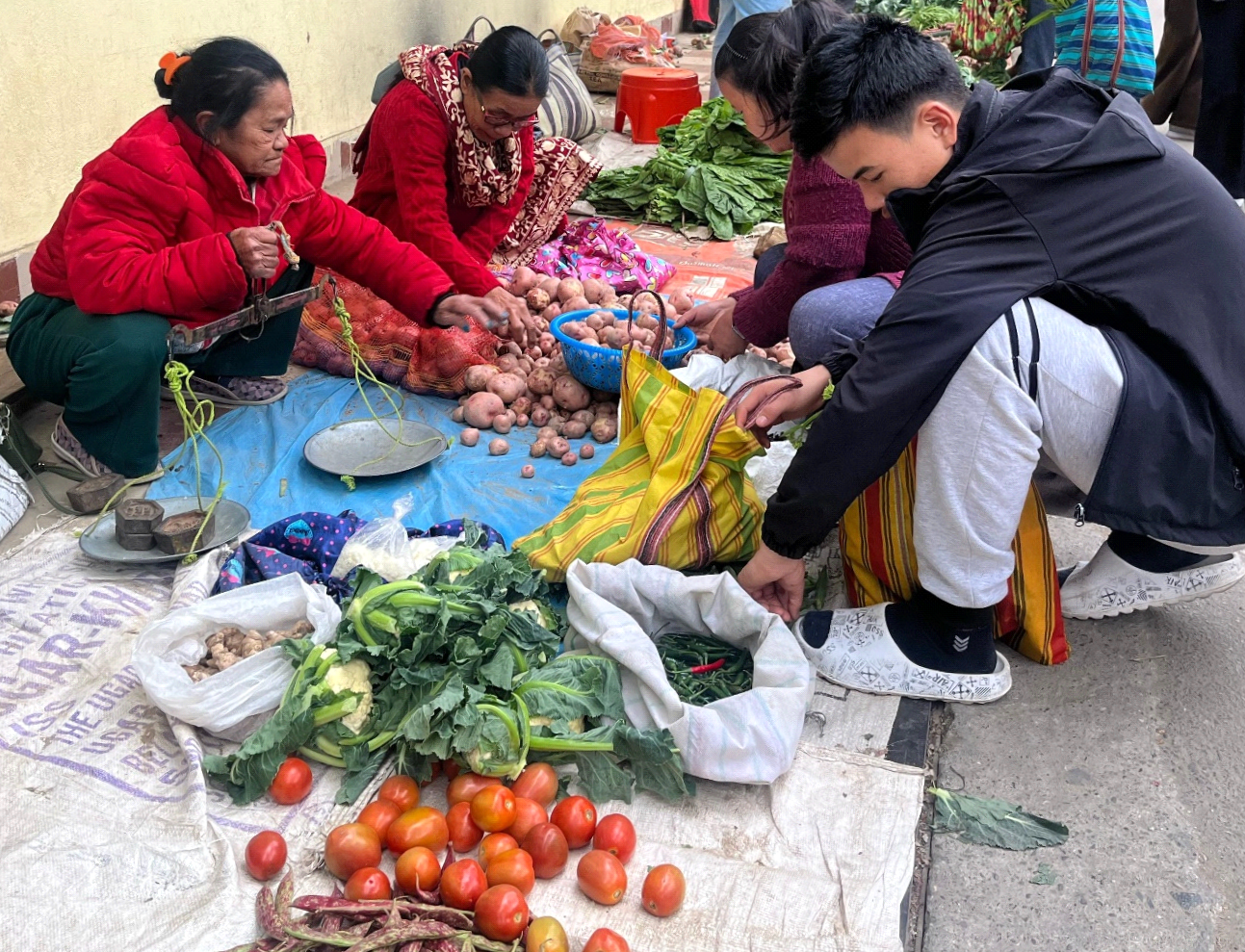
The Society of the Spectacle
Debord (2021) writes in his book that “life is presented as an immense accumulation of spectacles.” The Debordian analysis of the modern world perfectly describes the impact of the internet on the daily lives of people. Significant changes can be observed in the eating styles and habits of people. Debord (2021) further writes, “The spectacle presents itself as a vast inaccessible reality that can never be questioned. Its sole message is: What appears is good. The passive acceptance it demands is already effectively imposed by the monopoly of appearances, its manner of appearing without allowing any reply.” Today, appearances are considered a top priority. For instance, the food we consume must look good. Maybe this is why packaged strawberries are favoured over the ones sold in the farmer’s markets, the unpackaged strawberries likely fail to cater to the modern want for everything to look unnaturally perfect.
Today, appearances are considered a top priority. For instance, the food we consume must look good. Maybe this is why packaged strawberries are favoured over the ones sold in the farmer’s markets, the unpackaged strawberries likely fail to cater to the modern want for everything to look unnaturally perfect.
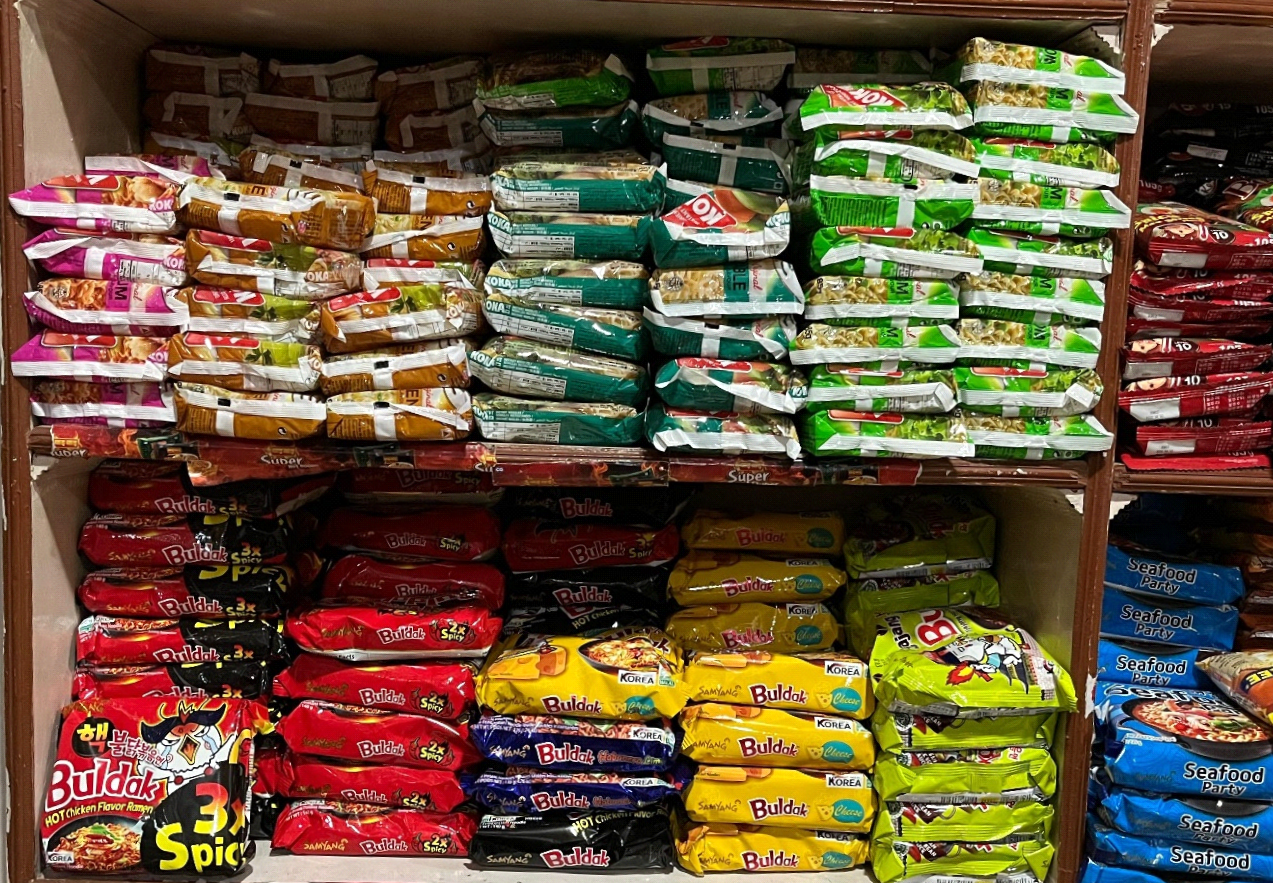
Today, it is harder to find experts engaged in advertising the richness of the natural world in comparison to the food industry who expertly market their processed food items through advertisement jingles and fancy packaging... Kimmerer (2015) writes,"Indulgent self-interest that our people once considered monstrous is now celebrated as success. We are asked to admire what our people view as unforgivable.The consumption-driven mindset masquerades as the ‘quality of life’ but eats us from within."
Banerjee (2006) writes, “My grandmother was a great believer in traditional herbal lore, according to which, a regular dose of bitter vegetables would protect you from all the physical ills with which nature assaults the female human body.” Today, it is harder to find experts engaged in advertising the richness of the natural world in comparison to the food industry who expertly market their processed food items through advertisement jingles and fancy packaging. At times, it is quite disturbing to witness the present food industry, alongside the alignment of people toward convenience stores and fast-food chains. A convenience store in Namchi that I regularly visit has a variety of healthy snacks like oats, muesli, protein bars, and cereals. But Korean ramen noodles are the star of the show because of their massive popularity amongst the younger generation. In recent years, there has been an overwhelming increase in Mukbang videos where people across the globe partake in consuming large quantities of food across media platforms. It rose to global popularity in the 2010s as Korean dramas and pop music gained acclaim. Often the amount of food looks challenging for an individual to finish in real life, furthermore, the motive for their food choices is based on increasing the viewership. However, there has been growing criticism of mukbang's promotion of unhealthy eating habits, particularly eating disorders, animal cruelty, and food waste. Kimmerer (2015) writes,“Indulgent self-interest that our people once considered monstrous is now celebrated as success. We are asked to admire what our people view as unforgivable. The consumption-driven mindset masquerades as the ‘quality of life’ but eats us from within.” This trend seems to have encouraged a generation of unhealthy eaters mesmerized by the spectacular performance of online eaters.
The Knowledge Keepers of the Land
The farmer's markets also provide an opportunity to learn about the food that we eat daily. Every corner has a story to tell, but are we ready to listen? It may be easy to read the packaging on the food in departmental stores but it is far more rewarding to understand the language of the fresh produce. The local vegetable markets ring with these sentences, “Brother/ Sister, how much is this broccoli? Please, can you reduce the price?” Nima Jangu, an elderly woman from Parbing, shared her fascination for old songs while talking about Gundruk (fermented leafy green vegetables) popularly eaten in Nepal, Darjeeling, and Sikkim. She never attended school but is an expert on organic farming and its importance in maintaining a special relationship with the land. She also reflected on the bygone days and how much cheaper the cost of living was in comparison to the present times. “There was no cinema hall in Namchi back in the day, we used to go to Kalimpong, but it didn’t cost us much. I am a big fan of Dev Anand and Amitabh Bachchan.” Our conversation deviated from vegetables to cinema, but it was a pleasure to listen to her anecdotes.
Convenience stores lack this human-to-human connection. One can read about the product’s ingredients in the packaging or know where it came from, yet one can barely unearth the stories behind the food. The way convenience stores function seems mechanical, dominated by the beeping of machines where humans are trained to be robotic. On the other hand, Farmers’ Markets are vibrant, bustling, and filled with the sounds of people.
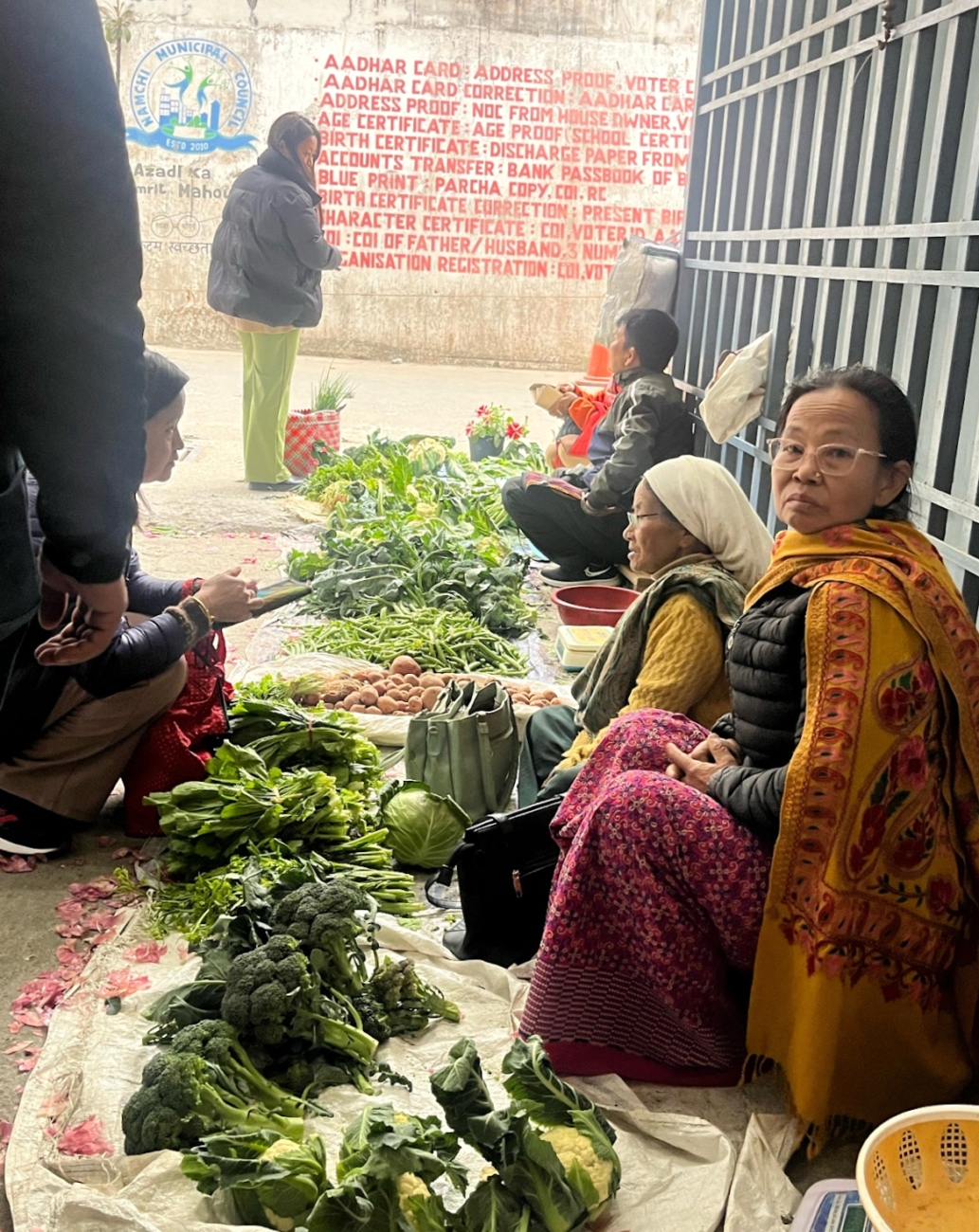
Namchi’s Kisan Bazar allows one to hope for a better tomorrow where more people become aware of the importance of healthy food choices which guarantees a good quality of life and supports our farmers and local sellers who are intertwined with the land.
Convenience stores lack this human-to-human connection. One can read about the product’s ingredients in the packaging or know where it came from, yet one can barely unearth the stories behind the food. The way convenience stores function seems mechanical, dominated by the beeping of machines where humans are trained to be robotic. On the other hand, Farmers’ Markets are vibrant, bustling, and filled with the sounds of people. As a food enthusiast, every Sunday I like to seek refuge in Namchi’s Kisan Bazar where I am constantly introduced to the seasonal vegetables, fruits, and flowers along with other local produce. This market reflects Sikkim’s image as an organic state, where people’s arms are laden with vegetable bouquets. For me, Kisan Bazar provides camaraderie, a community of people who promote healthy eating and companionship. It is Namchi’s green zone, replete with seasonal greens, vegetables, and fruits, it makes one believe that it is still possible to return to an ecologically balanced world. Kimmerer (2015) says “leadership is rooted not in power and authority but in service and wisdom.” The market represents this belief while acting as a bastion against the grocery stores of large corporations that profit from competition while risking the wellness of their consumers. Buettner (2023) says, “Imagine a community where the cheapest, most accessible, and most delicious foods are whole, plant-based foods. Imagine roads that are not just built for cars, but also for humans where it is easy to connect and socialize, where people are putting their purpose to work every day.” Namchi’s Kisan Bazar allows one to hope for a better tomorrow where more people become aware of the importance of healthy food choices which guarantees a good quality of life and supports our farmers and local sellers who are intertwined with the land.
References:
- Berger, John. Ways of Seeing. Penguin Books, 2008.
- Kimmerer, Robin Wall. Braiding Sweetgrass. Milkweed Editions, 2015.
- Obama, Michelle. Becoming. Penguin Books, 2021.
- Debord, Guy. The Society of the Spectacle. Critical Editions, 2021.
- Banerji, Chitrita. The Hour of the Goddess. Penguin Books, 2006.
- Buettner, Dan. Live to a 100: Secrets of the Blue Zones, 2023, A Netflix documentary.
Anshu teaches English Literature at Sikkim Alpine University. She completed her MA and MPhil from the University of North Bengal and is currently working on a project with Zubaan, a feminist publishing house based in Delhi. Her writings have appeared in several creative journals and web portals like Livewire, The Little Journal of North East India, On Eating; A Multilingual Journal of Food and Eating, Parcham, Platos Cave Online, and others. She was also one of the fifty writers selected for the third book of Terribly Tiny Tales, an online storytelling collective in collaboration with Penguin India. Her interests lie in reading, researching, and writing.
I am grateful to the Sikkim Project for providing me with the platform to publish my article. It would not have been possible without the invaluable input of Dr Mona Chettri. I am deeply thankful to Bibhusha, for her patience and editorial assistance. I am also grateful to Prava Rai Ma’am for her support. Lastly, I would like to dedicate this article to the people of Namchi’s Kisan Bazar, who shared their stories with me.
3 comments on “SIKKIM: THE ORGANIC LEGACY AND EATING HABITS”
Leave a Reply
Latest Posts
Latest Comments
No 'Comments_Widget_Plus_Widget' widget registered in this installation.


Brilliant article Anshu... Congratulations!
I really enjoyed reading your article.very well written... My best wishes to you Ashu...
Thank you di. It means a lot to me.